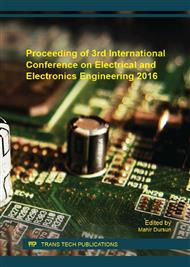p.100
p.105
p.112
p.121
p.129
p.136
p.144
p.152
p.161
Heterogenous Computing on Iris Matching with OpenCL
Abstract:
This study presents parallelization of Hamming Distance algorithm, which is used for iris comparison on iris recognition systems, for heterogeneous systems that can be included Central Processing Units (CPUs), Graphics Processing Units (GPUs), Digital Signal Processing (DSP) boards, Field Programmable Gate Array (FPGA) and some other mobile platforms with OpenCL. OpenCL allows to run same code on CPUs, GPUs, FPGAs and DSP boards. Heterogeneous computing refers to systems include different kind of devices (CPUs, GPUs, FPGAs and other accelerators). Heterogeneous computing gains performance or reduces power for suitable algorithms on these OpenCL supported devices. In this study, Hamming Distance algorithm has been coded with C++ as a sequential code and has been parallelized a designated method by us with OpenCL. Our OpenCL code has been executed on Nvidia GT430 GPU and Intel Xeon 5650 processor. The OpenCL code implementation demonstrates that speed up to 87 times with parallelization. Also our study differs from other studies, which accelerate iris matching, with regard to ensure heterogeneous computing by using OpenCL.
Info:
Periodical:
Pages:
129-135
Citation:
Online since:
August 2016
Authors:
Price:
Сopyright:
© 2016 Trans Tech Publications Ltd. All Rights Reserved
Share:
Citation:


